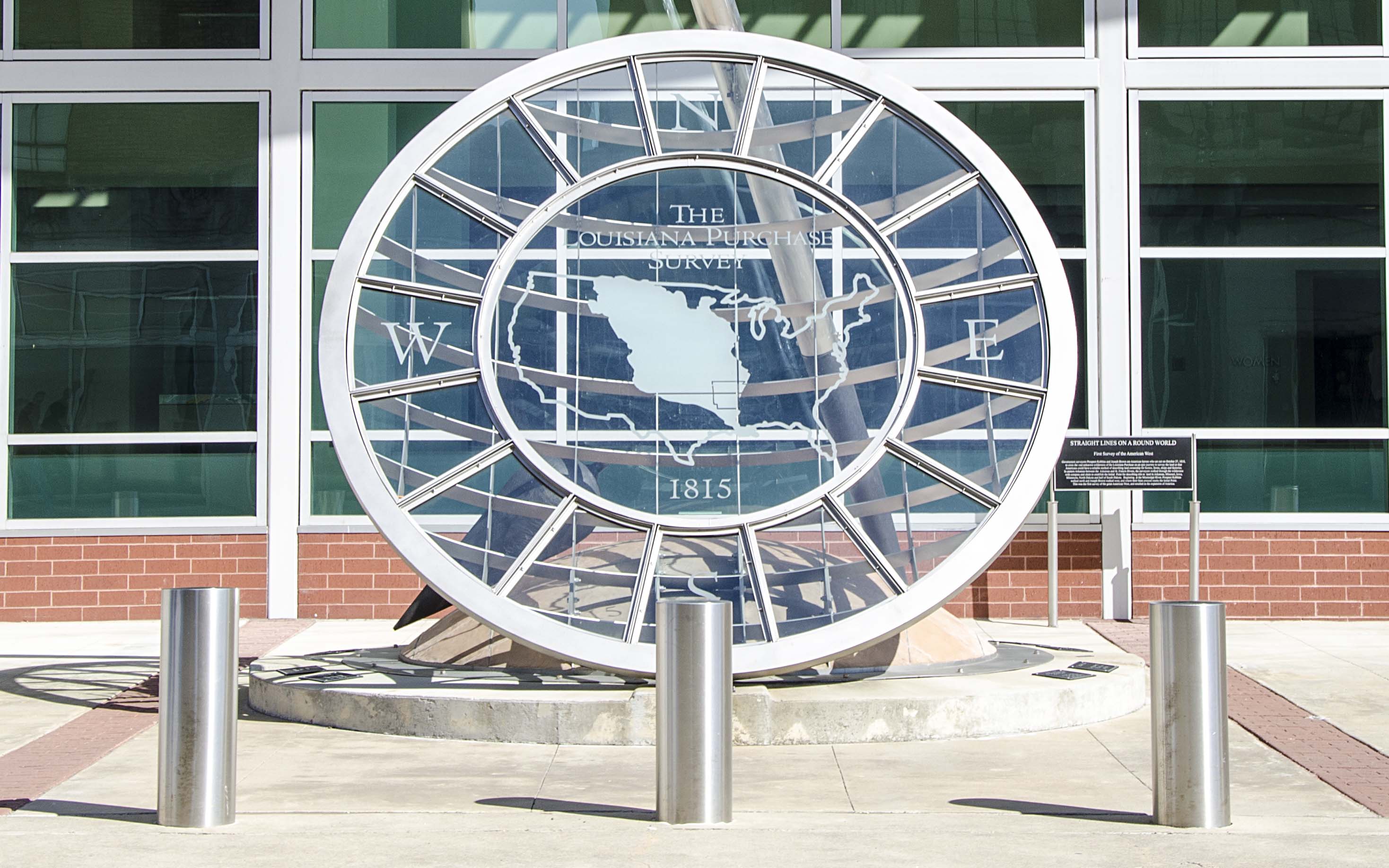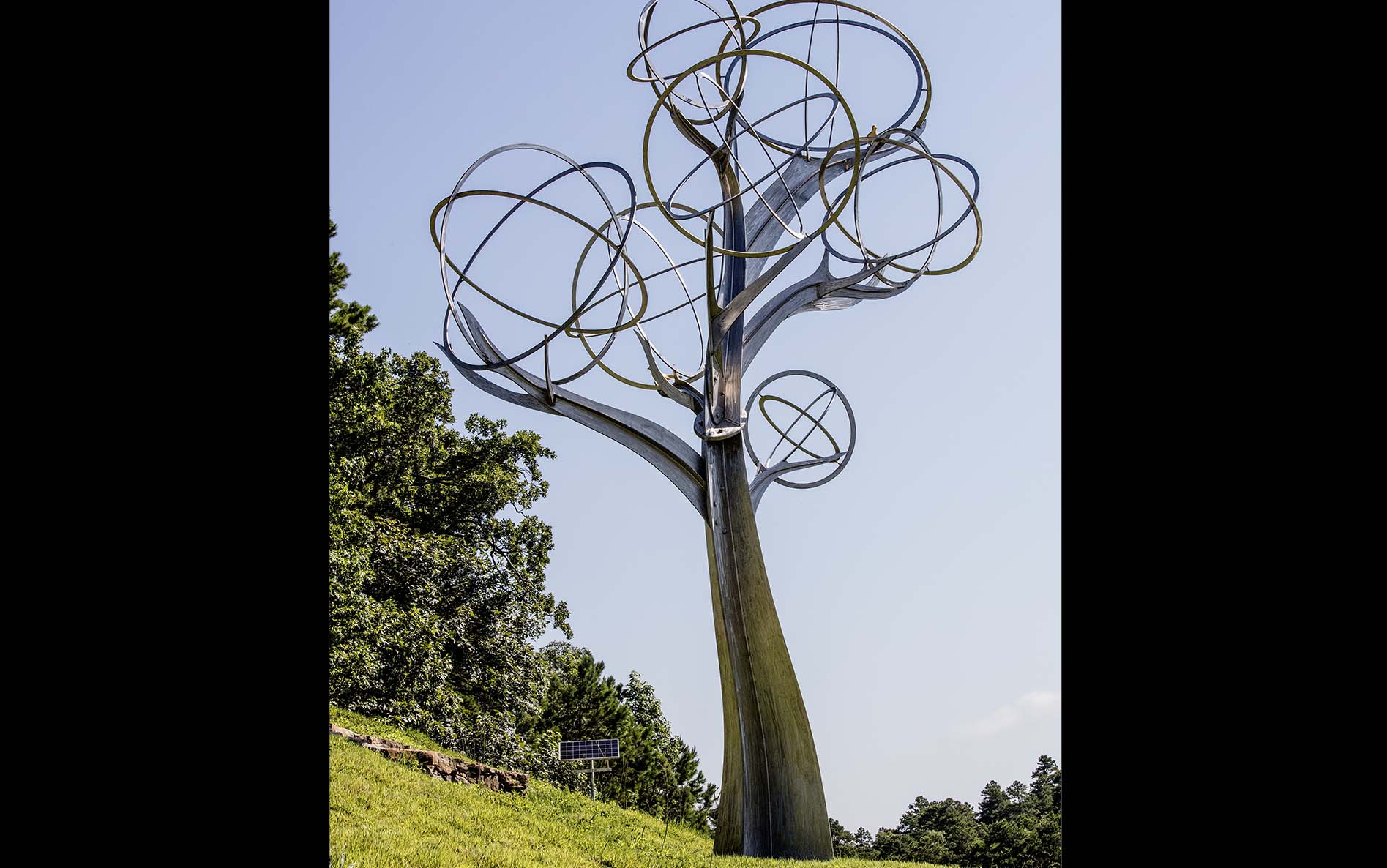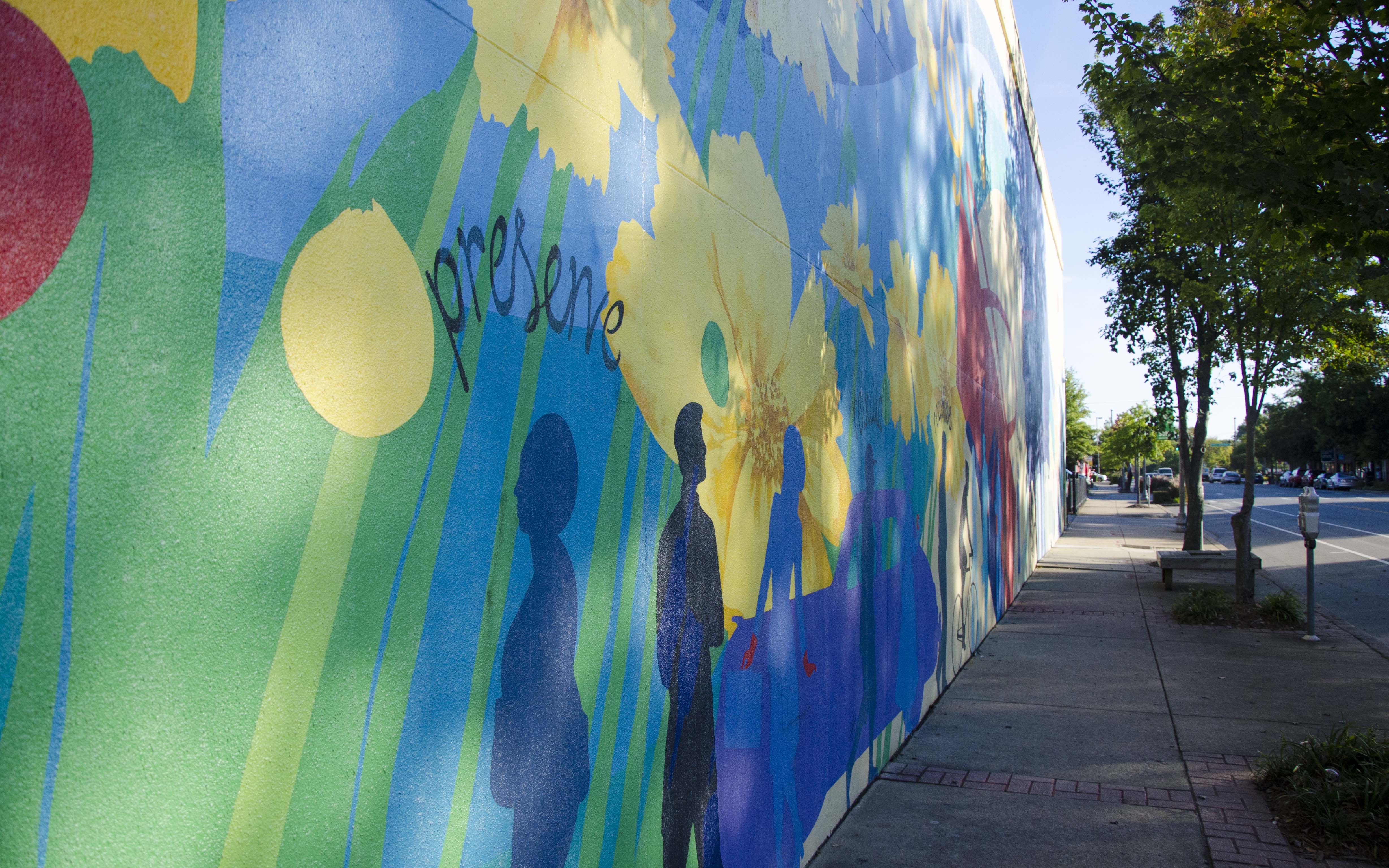Public art at home in the Rock
October 8-14, 2018
By Amber M. Davis
Central Arkansans may have noticed more murals and sculptures popping up in the past several years. “It’s been kind of a renaissance in the last decade,” said Michael Warrick, Professor of Sculpture at the University of Arkansas Little Rock.
According to Warrick, the public art scene has expanded rapidly throughout central Arkansas, with pieces landing everywhere from the River Market to west Little Rock to Maumelle and Bryant. The art is as varied as the locations – “The pieces are everything from representational to abstract,” said Dr. Dean Kumpuris, a co-founder of Sculpture at the River Market.
Visitors and residents can see many of sculptures Dr. Kumpuris references in Little Rock’s Riverfront Park. According to Dr. Kumpuris, the park features approximately $4 million in public art, most of which was donated to the City by Sculpture at the River Market. Dr. Kumpuris said that the organization chose Riverfront Park in an attempt to revitalize downtown Little Rock.
Public art has played an important role in the revitalization of downtown, according to Anderson Penix, Communications Director, Downtown Little Rock Partnership. He said that art inspires people to “push forward on their own dreams. They will be inspired to start their own business, open their own restaurant, or create something completely new. Art provides a spark, a boost of energy.”
Dr. Kumpuris and Warrick agree that one benefit of public art is that it encourages people to get outside and walk around the community, especially when the pieces are grouped within a few blocks.
Warrick points to South Main Street in Little Rock as one example. A giant, colorful mural at 12th and South Main Streets features flowers and bright silhouettes and greets everyone entering the SoMa neighborhood. People can travel two blocks south to appreciate several pieces at the Bernice Sculpture Garden, including one sculpture by Warrick titled “Visionary.” Just one block away from the Sculpture Garden are more murals, including a collection of larger-than-life whimsical vegetables on the wall outside The Root Café at 15th and South Main Streets.
“Visionary” is a bronze and limestone sculpture of a man meditating. “Some people see a person with his eyes closed. Some see a person sleeping. Some see a person meditating. But what everyone sees is a person at peace,” explained Warrick. As long as the art causes the viewer to think, Warrick is not bothered when viewers reach different conclusions about his work.
One thing that makes public art unique in Warrick’s mind is that the viewer has so many opportunities to interact with each piece, especially when it is in the viewer’s neighborhood or near the viewer’s workplace. A person might look at a mural while walking the dog one morning, then take it in while drinking tea that afternoon, and then see it at 30 miles per hour while driving by at dusk. “There will be something that draws [the viewer] in to think about it more,” Warrick said. The more times a person is exposed to a piece, the more likely it is to prompt the person to start to wonder, “What does this have the potential to mean? What do I see? What does it make me feel or experience?”
Further north on Main Street in Little Rock, visitors can find The Creative Corridor, between the 100 and 700 blocks of Main Street. The Creative Corridor has received approximately $3.5 million in grants for revitalization, much of which has been used to install public art or beautify the area. “Public art is more than just icing on the cake [on Main Street]. The art is a critical component,” said Caran Curry, Grants Manager for the City of Little Rock. People traveling through this area of Main Street can see Matt McLeod’s tremendous mural featuring vibrant fish at the corner 6th and Main Streets. Even the crosswalk in front of The Rep at the same corner is visually appealing and composed of a series of music notes. Art students from schools around Little Rock have also started painting canvases that are being displayed in the windows of empty buildings, mostly in the 600 and 700 blocks of Main Street.
According to Curry, the private businesses have now invested approximately $125 million in improving the area around the Creative Corridor. “This is a great return on that investment,” Curry stated. Dr. Kumpuris and Warrick also ranked economic development among the most important purposes of public art. “The Chamber of Commerce and other organizations can use the public art as a way to sell the city to businesses,” Dr. Kumpuris said. Warrick also noted, “Culture is one of the biggest drivers of economic development in cities.” Penix pointed out that pubic art increases economic development by encouraging tourism and repeated visits by those tourists.
Another advantage to public art is that although there is a cost of purchasing art for public spaces, it is relatively inexpensive to maintain. Artists use special sealants to protect murals on buildings and sidewalks from the elements. Additionally, Warrick said that sculptures are normally made of materials that withstand the environment. Most simply need to be cleaned with soap and water from time to time, according to Dr. Kumpuris.
Public art can provide even more than economic development, beautiful surroundings, and a reason to get outside. Drain Smart is an environmental-awareness program that has spread through Arkansas. Since 2015, artists have been painting storm drains around Little Rock. Dr. Dan Scheiman, Drain Smart Committee Member, said the purpose of Drain Smart is to educate the public and, “to get people to realize that anything going down a storm drain goes straight to the waterway.”
Each year, 18 artists are chosen to paint small murals on pre-selected drains throughout Little Rock. Drain Smart designates the drains with the help of the City of Little Rock, and choses drains that are grouped together in walkable areas, so people can see several of the drains at one time. There are painted drains all over Little Rock, from 12th Street, to Kavanaugh Boulevard, to the Bass Pro Shop, to the Promenade at Chenal. Some artists are professionals, but others are talented amateurs, and even high school students. “We appreciate that diversity. There are so many talented people, and we appreciate that they’re willing to share their talents with the community,” Dr. Scheiman said. “This program shows that anyone can contribute to public art and be an advocate for the environment,” he continued.
The Drain Smart program has been extremely popular in Little Rock. “We have received nothing but positive feedback,” Dr. Scheiman noted. The project has been so successful that other cities in central Arkansas have developed their own versions of Drain Smart. Artists are now bringing public awareness to the water supply by painting drains in Pine Bluff, Arkadelphia, Hot Springs and Conway. Dr. Scheiman said that Bryant has also recruited artists to paint drain murals in that city. The Bryant High School art department is even planning to paint two drains on the campus.
Another important purpose of public art is to provide a connection to the past. For example, Warrick and Aaron P. Hussey created a sculpture titled “Transcendence” at the Commemorative Garden at the Central High National Historic Site. Developing that piece was an important time period for Warrick. He met most of the Little Rock Nine, and described his interactions with Elizabeth Eckford as being “a transformative life experience”. He thinks it is important for the public to learn about and remember the darker eras of history to keep from repeating them.
Warrick also noted that public art can help people understand how society got to a certain place. His newest public sculpture is in front of the Statehouse Convention Center and is titled “Straight Lines in a Round World.” It is another collaboration with Mr. Hussey and is made of stainless steel, bronze, concrete and glass. The sculpture is composed of a giant compass, monopod, plumb bob and part of a sphere. Warrick said he hopes the sculpture will pique people’s interest in the Louisiana Purchase. He wants the viewer to come away with “a sense of the history and what it took to make that history.”
“Public art is visible culture,” Warrick said. Further, it “enhances pride in our community and makes it distinctive,” Dr. Kumpuris noted. New murals and sculptures continue to emerge all over central Arkansas, and the culture of public art shows no signs of slowing down.
PHOTO CAPTIONS:
1. Outside the Statehouse Convention Center, sits a sculpture titled, “Straight Lines in a Round World.” Created by local artist Michael Warrick and Aaron P. Hussey, this piece is part of a recent and ongoing public art renaissance in central Arkansas. (Photo by Becca Bona)
2. “Mockingbird Tree”, 18’ x 12’ x 10’, stainless steel, bronze, gold leaf, located in Chenal Parkway, was completed in 2016 by Michael Warrick. Warrick was inspired by a scribbled drawing his daughter created when she was 3 years old. (Photo provided)
3. The giant, colorful mural at the corner of 12th and Main Streets welcome cyclists, cars, and pedestrians alike to SoMa, Little Rock’s South Main Street Art District. In the past few years, various murals and public art pieces have made central Arkansas their home. (Photo by Becca Bona)





